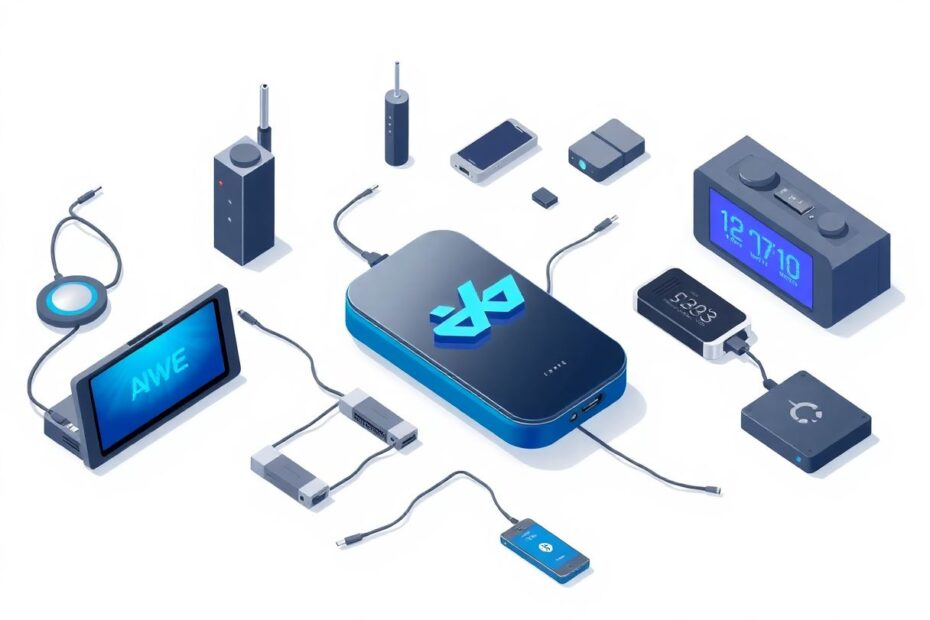Introduction
Bluetooth technology has become an integral part of our daily lives, allowing us to connect various devices wirelessly. However, many Windows 10 and 11 users have reported frustrating random Bluetooth disconnections. This comprehensive guide will explore the root causes of these issues and provide detailed solutions to ensure a stable Bluetooth connection for all your wireless devices.
Understanding the Problem
Random Bluetooth disconnections can occur due to various reasons, including outdated or corrupted drivers, Windows power management settings, interference from other devices, hardware issues, and software conflicts. Before diving into solutions, it's crucial to understand that Bluetooth operates on the 2.4 GHz frequency band, which is also used by many other wireless devices, potentially leading to interference.
Quick Fixes and Basic Troubleshooting
Often, simple solutions can resolve Bluetooth connectivity issues. Restarting your computer is a fundamental troubleshooting step that can clear temporary glitches and reset the Bluetooth stack. Ensure that Airplane Mode is disabled and Bluetooth is enabled in your system settings. These basic checks can sometimes be overlooked but are essential in maintaining a stable connection.
Updating Windows and Drivers
Keeping your system up-to-date is crucial for maintaining optimal performance and compatibility. Windows updates often include fixes for known Bluetooth issues and improvements to the overall wireless functionality. To update Windows, navigate to Settings > Windows Update and click "Check for updates."
Updating Bluetooth drivers is equally important. Outdated or corrupted drivers are a common cause of connectivity problems. Access the Device Manager, expand the Bluetooth category, right-click on your Bluetooth adapter, and select "Update driver." If Windows doesn't find new drivers automatically, visit your computer manufacturer's website for the latest Bluetooth drivers.
Advanced Troubleshooting Techniques
Windows power management settings can sometimes interfere with Bluetooth connectivity. To prevent this, access the Device Manager, right-click on your Bluetooth adapter, select Properties, navigate to the Power Management tab, and uncheck "Allow the computer to turn off this device to save power."
Running the built-in Windows Bluetooth troubleshooter can help diagnose and fix common issues automatically. Access this tool through Settings > System > Troubleshoot > Other troubleshooters, then run the Bluetooth troubleshooter.
Restarting Bluetooth services can also resolve connectivity issues. Open the Services application (services.msc), locate the "Bluetooth Support Service," right-click, and select "Restart." Ensure its Startup type is set to "Automatic" for consistent functionality.
Hardware Considerations and Interference Mitigation
Bluetooth's 2.4 GHz frequency can be susceptible to interference from other devices. To mitigate this, try moving away from other wireless devices, microwaves, and cordless phones. Positioning your Bluetooth device closer to your computer can also improve connectivity.
For laptops, verify that Bluetooth is enabled in BIOS settings. Desktop users with external Bluetooth dongles should try different USB ports to rule out port-specific issues. These steps help isolate whether the problem is hardware or software-related.
Software Conflicts and User Profile Issues
Booting your system in Safe Mode can help identify if third-party software is causing Bluetooth disconnections. If Bluetooth works correctly in Safe Mode, it suggests that a third-party application may be interfering with normal operation.
Sometimes, user profile corruption can lead to Bluetooth issues. Creating a new user account and testing Bluetooth functionality can help isolate profile-specific problems. If Bluetooth works correctly on the new account, consider transferring your data and settings to this new profile.
Advanced Solutions: Reinstalling Drivers and Command-Line Fixes
A clean reinstallation of Bluetooth drivers can resolve persistent issues. Uninstall the current Bluetooth adapter from Device Manager, ensuring to delete the driver software if prompted. After restarting your computer, Windows should automatically reinstall the driver.
For more advanced users, command-line solutions can help reset network-related components that might affect Bluetooth functionality. Running commands like netsh winsock reset and ipconfig /flushdns in an elevated Command Prompt can resolve underlying network stack issues that impact Bluetooth performance.
When All Else Fails: System Restoration and Hardware Checks
If all previous steps fail to resolve the issue, consider performing a clean Windows installation as a last resort. This process can eliminate any deep-seated software conflicts or corruptions affecting Bluetooth functionality.
In some cases, hardware failure of the Bluetooth adapter itself may be the culprit. If you've exhausted all software solutions, consulting with your device manufacturer's support or considering a replacement of the Bluetooth adapter might be necessary.
Preventive Measures and Best Practices
To minimize future Bluetooth disconnections, adopt these best practices:
- Regularly update Windows and device drivers to ensure compatibility and security.
- Perform periodic system maintenance, including disk cleanup and defragmentation.
- Avoid overloading your system with too many simultaneous Bluetooth connections.
- Keep your Bluetooth devices' firmware updated to ensure optimal performance and compatibility.
- Use Bluetooth 5.0 or later devices when possible, as they offer improved range and stability.
Conclusion
Random Bluetooth disconnections in Windows 10 and 11 can be frustrating, but with this comprehensive guide, you're now equipped to tackle the issue systematically. Remember to approach the problem methodically, starting with the simplest solutions before progressing to more complex troubleshooting steps.
By understanding the underlying causes of Bluetooth disconnections and implementing the solutions provided, you can significantly improve your wireless connectivity experience. Keep in mind that technology is ever-evolving, and staying informed about the latest updates and best practices for Bluetooth technology will help you maintain a stable and efficient wireless ecosystem on your Windows system.
